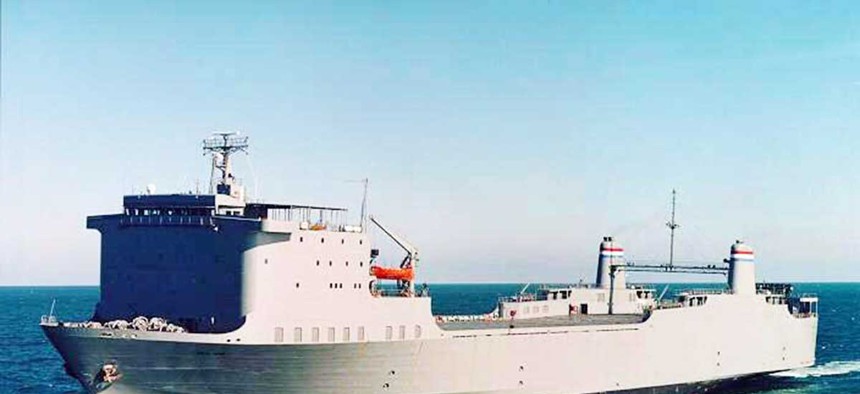
The US is modifying the MV Cape Ray, a Transportation Department ship, to neutralize Syria's chemical weapons. Her sister ship, the MV Cape Rise, is pictured here. AP Photo
U.S. Modifying Ship to Destroy Assad's Chemical Weapons at Sea
Destroying the weapons will cost between $47-$61 million, and is to focus on 500 nerve agents too dangerous to be neutralized by other parties. By Global Security Newswire
The United States is installing chemical-arms destruction gear on one of its transport vessels ahead of a possible international request for direct U.S. help to destroy nerve agents and related materials stockpiled by Syrian President Bashar Assad, a defense insider told Reuters on Sunday.
Washington was reportedly placing the new technology on the Ready Reserve Force ship MV Cape Ray after proposing a direct role in eliminating the Syrian arms to the Organization for the Prohibition of Chemical Weapons, which is leading oversight of the effort. Assad acknowledged possessing chemical weapons and assented to the disposal project after an August nerve-gas attack raised the possibility of U.S. military strikes against regime targets.
The potential at-sea destruction effort would focus on roughly 500 tons of nerve agents and other materials deemed too hazardous for elimination in another nation or by independent firms. Roughly 800 additional tons of less dangerous chemical-arms ingredients are slated for possible elimination by private entities; 35 companies so far have voiced interest in the role, OPCW Director-General Ahmet Üzümcü said in Friday comments quoted in a statement by his agency.
Destroying the materials is expected to cost between $47 million and $61 million, but moving the stocks would require additional money, Üzümcü indicated last week in prepared remarks to the 41-nation OPCW Executive Council.
The arms are slated to be packed at a number of Syrian locations and then transferred to the coastal city of Latakia, where they would be placed on foreign vessels and later moved to U.S. ships, the Associated Press quoted Sigrid Kaag, the disarmament project's special coordinator, as saying on Saturday.
Üzümcü on Wednesday said his agency "has developed measures to ensure that no undetected removal of chemical weapons occurs" during their transfer into shipping containers.
The precautions would involve the "physical presence of inspectors, the use of remote monitoring equipment, the application of seals," and the measurement of chemical quantities by weight and other means, he said in a separate statement last week.
NEXT STORY: North Korea Resumes Missile-Launch Site Work




